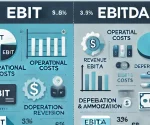Forfeiture and surrender are two different procedures by which a company can recover shares from its shareholders. Both occur when a shareholder fails to fulfill one or more of its obligations, such as the shareholder failing to pay the stipulated share capital, for example. Where forfeiture and surrender do differ is in procedure, effects, and legal implications for investors, company directors, and anyone dealing with corporate finance.
What is Forfeiture of Shares?
Share forfeiture takes place when the ownership of shares issued to any shareholder is canceled or terminated by the company on account of that shareholder’s inability to meet his financial obligations, usually calls that have gone unpaid for the amount of unpaid capital. In the event of failure by a shareholder to pay due amounts in time, the company is allowed to forfeit such shares as a means of protecting its financial interests.
According to the Articles of Association, the company governs forfeiture by those terms. Usually, those terms provide terms and conditions that must be fulfilled, such as when a call for unpaid capital remains for a certain period, shares can be forfeited. On forfeiture of shares, the shareholders lose their ownership rights. Subsequently, the company can issue those shares to new investors.
Forfeiture of shares is an important mechanism that ensures that a company does not experience loss on account of unpaid calls. It is another tool that is supposed to bring equality amongst shareholders because those who do not discharge their obligation cannot benefit from holding shares.
Forfeiture of Shares Entry
The accounting treatment involves making journal entries in the books of the company to cancel shares. When shares are forfeited, the need is to reverse the original entries recorded to issue those very shares and reflect it as forfeiture in its books and statements.
The typical journal entry for forfeiture of shares is:
- Debit: Share Capital account (with the nominal value of the forfeited shares).
- Credit: Calls in Arrears account (for any unpaid amount on those shares).
Once the forfeiture is recorded, the company also debits the Share Forfeiture account to record any premium received on the shares. The company’s books then reflect both the loss of the shareholder’s capital and the cancellation of the shares in the company’s records.
Procedure of Forfeiture of Shares
The procedure for shares forfeiture is in the articles of association. Though the number of procedures may be different in terms of each company’s documents, it often runs through several stages:
- Issuance of Call Notice: The company issues a notice to the shareholders requesting them to pay for the uncollected shares. Such notice usually provides a time limit for the payment.
- Reminder Notice: In case the shareholder fails to pay within the period agreed with the company, the company issues a reminder notice. The reminder is a warning to the shareholder concerning the consequences of non-payment.
- Resolution for Forfeiture: After the reminder notice, if the shareholder does not pay even after this notice, the company passes a resolution at its board meeting to forfeit the shares. The company may then officially cancel the shares.
- Notification to Shareholder: The shareholder is informed that his shares have been forfeited. This formal communication usually refers to the details of the shares and why they had been forfeited.
- Reissue or Cancellation: Once the shares are forfeited, they can either be canceled with no hope of being issued again or reissued to new investors.

What is Surrender of Shares?
In the process of surrendering shares, a shareholder gives up his shares voluntarily to the company. It involves the shareholder and not the company. A shareholder can surrender his shares for any reason related to financial stress, the need to exit an investment, or changing directions in the company.
Request for surrender is usually at the behest of the shareholder, and the company can either agree or refuse the request as proscribed in the articles of association. The company may choose to reissue the surrendered shares or cancel them entirely. Surrendering shares does not carry any legal or financial penalty to the shareholder. Unlike forfeiture, the shareholder usually has a right to recover any paid-up capital, but this will depend upon the policies of the company.
Surrender of Shares Journal Entry
The journal entry for the surrender of shares involves recording the cancellation of the shares in the company’s books. The typical journal entry is as follows:
- Debit: Share Capital account (the nominal value of the surrendered shares).
- Credit: Shareholder’s account (the amount paid up on the surrendered shares, if any).
This accounting treatment reflects the cancellation of the shares and the return of any paid-up capital to the shareholder.
Procedure of Surrender of Shares
The procedure for the surrender of shares is less formal than forfeiture and involves the following steps:
- Shareholder Request: The shareholder puts forth their intent to divest their holdings to the company. This may be due to multiple reasons, such as personal financial exhaustion or due to strategic decisions to withdraw from the investment.
- Acceptance by the Company: The company can either accept or reject the surrender request. The board of directors usually makes this decision. If the company accepts the surrender, it will normally draft a resolution to that effect.
- Return of Capital: The amount of paid-up capital would be returned to the shareholder if the company agrees to the surrender, subject to the conditions and terms of the articles of association.
- Cancellation of Share: Following the surrender, the company can only cancel the shares. Thereby results in reducing the number of outstanding shares. This may impact the composition of the shareholding of the company and its financial position.
- Reissuance of Shares: The Company may, in some cases, reissue the surrendered shares to new shareholders.
Difference Between Forfeiture and Surrender of Shares
The forfeiture and surrender of shares share certain similarities but also have distinct differences in their procedure and impact on both the company and the shareholder.
- Initiation: The company initiates forfeiture as a result of unpaid capital. The initiation of surrender is done by the shareholder of the shareholder’s own volition, returning the shares.
- Penalties: Forfeiture usually carries a penalty of loss of all paid-up capital. Surrender can cause the shareholder to recover paid-up capital.
- Shareholder Effect: In case of forfeiture, the shareholder forfeits all rights and claims to shares, whereas in case of surrender, the shareholder gets back the paid-up amount and withdraws from the company without suffering any further consequence.
- Legal Procedure: Articles of Association regulate the legal process of forfeiture. Whereas surrender is a relatively more lenient agreement that the company can accept or decline.
- Company’s Choice: In the case of forfeiture, the company can issue the same shares again or nullify them. In the case of surrender, the company can cancel or issue the same shares based on discretion.
| Feature | Forfeiture of Shares | Surrender of Shares |
|---|---|---|
| Initiation | Initiated by the company | Initiated by the shareholder |
| Payment Due | Non-payment of calls | Voluntary return of shares |
| Penalties | Loss of all paid-up capital | May recover paid-up capital |
| Effect on Shareholder | Loss of ownership rights | Retains the option to recover capital |
| Reissue Option | Possible reissue or cancellation | Possible reissue or cancellation |
| Company’s Decision | The company may accept or reject | Company may accept or reject |
| Legal Standing | Governed by legal provisions | Typically more flexible |
Forfeiture and Surrender of Shares FAQs
What happens when shares are forfeited?
Forfeited shares are canceled, and the shareholder loses all rights to dividends, voting, and claims on assets. The company may reissue these shares to new investors or cancel them entirely.
Can a shareholder recover the paid-up capital on surrendered shares?
Yes, in most cases, the shareholder may recover any paid-up capital when shares are surrendered, depending on the company’s policies.
Is the procedure for forfeiture of shares different from surrender?
Yes, the company initiates the forfeiture due to non-payment. Whereas shareholders voluntarily initiate surrender. The shareholder’s rights and recovery of capital also differ between the two.
Does the company need approval for the forfeiture or surrender of shares?
Forfeiture typically requires a resolution from the company’s board. While surrender is based on shareholder initiation and may require board approval.


